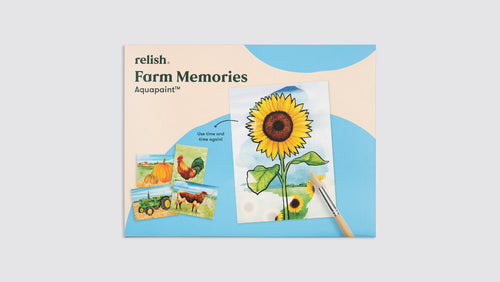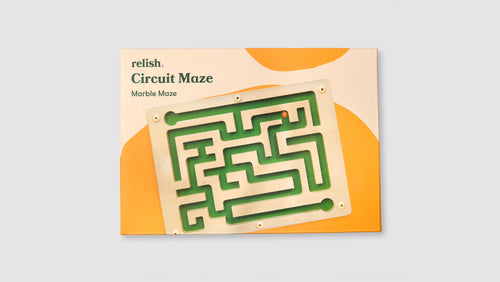Standing in Target, Jim realised that life was going to be slightly different than before - as he wandered the aisles looking for a way out of the store that he had been in many times he suddenly could not remember how to leave. Within two weeks of the first instance, Jim was unable to remember the drive to his daughter’s home. He decided it was best to book an appointment with his doctor.
Following many tests, Jim was provided with the diagnosis of dementia at the age of 76, and spent several weeks speaking with people that had or were researching dementia. He came to the conclusion that he would be able to stay on his farm in Minneapolis but would require help from his support system and a carer.
Shortly after Jim became increasingly worried and anxious about items in the house breaking and his doctor advised him that he would now need to go to a long-term care facility that had more of a structured lifestyle. Jim had lived on his farm since 1947 and was surprised by the advice from his doctor as he thought he would have a little longer to live amongst the life he had always known, but he drew comfort from his faith and put his house on the market. Jim had built the house, out buildings and looked after his animals on the farm for 41 years and he reminisced on the memories he created with his wife Jeanne and daughter Sara.
Within a month, Jim had sold the house, land, farm equipment and tractors to a lovely family and moved into a facility in a suburb of Minneapolis that was near to his daughter’s family. He immediately warmed to the people, got involved in the activities and joined the local church.
Jim always had an interest in painting and began over 10 years before he moved into the care facility, as he had learned more about his passion online. He became captivated by watercolour and had to learn many more techniques to create the visuals he had in his mind.
When he moved in 2015 he took all of his painting equipment with him, and planned to continue with watercolours but as his anxiety grew he realised that he did not want to paint as he could not decide on the subject.
Jim then discovered “yupo paper”, which was like painting on glass. The paint did not absorb into the paper, which allowed Jim to tap back into his creativity and learn a new skill. He no longer had to decide on a subject, only experiment with the movement of the paint.
“I decided right away that I would not use a brush. 99% of my paintings were done using other methods such as: chain pull, pour, wet paper towel, balloon, press and pull, and miscellaneous techniques.”
Jim then began his own website to sell and showcase his art. He has created over 700 pieces but only 394 of them he deemed worth to sell. The process of creating a piece takes around 5 days and there are 10 stages to create a perfect piece.
“The best part of painting is how thrilled I get when I see what I have created. I get surprised when I try something just a little differently and then get an unexpected result. I enjoy seeing that some people really like what I have painted. Also, it’s fun when two different people look at the same painting and have totally different perspectives about it.”
Q&A with Jim Ryberg
How possible is it for people with dementia to start painting?
I think what is needed is a basic class in the fundamentals of painting. A class that includes things such as the different classifications of painting, the different types of paint to use, what supplies are needed, where to buy the supplies, etc. If you cannot join a class, all the information can be found on the internet, and a relative or friend could help.
What would you have told yourself at the beginning of your journey?
Start out with the idea that you’re not going to be doing this alone and always be willing to ask for help. And in my case, “hang on,” it’s going to be one wild ride.
STAY ACTIVE! When I visit doctors, nurses, and other professionals, which is often, the first thing they ask is, “How are you so verbal after living 7.5 years with dementia?”
One of the most important things that I have done is staying active, both physically and mentally. I have always loved being outside, and I enjoy walking. Since my first days at the facility, I have walked three miles almost every day. In the spring, summer, and fall, I walk outside. In the winter and on rainy days, I walk in the big underground parking garage. I play brain games on my computer every day, usually at least 20 times or more. I never watch TV during the day and I read a lot.
And of course, there is painting. I spend two evenings a week painting, I start around 5:30 pm and I paint for about five hours.
What has been your biggest lesson in this journey and starting your painting career?
Without a doubt, the biggest hurdle with both things has been learning patience. It took a very long time before I got close to even being able to do a poor painting job, let alone create something that was any good. That was true with both watercolour as well as abstract painting.
What does your daily life look like now?
As my dementia and anxiety get worse, I try to stay with my same routines as much as possible. Sometimes it takes longer to do things, or I forget what to do next. Then I rely on a wonderful dear friend who will sit with me and write out what each day looks like. My friend is a huge pick-me-up. This is the time of my life that I can’t do it alone. I need others. Sometimes I would like to have a pity party, but I have had such a wonderful life that there should be no room for that.
What brings you the most joy in your day-to-day life?
The number one source of joy in my life is companionship.
Number two is reading. I still love to read but I have one little problem, if I put a book down for the day and want to continue the next day I would have to start from the beginning. Otherwise, I can’t remember the storyline. So, now I tend to read short stories.
Number three is walking. I still love to walk, and I’ve figured out the key to successful daily walking. I take my time and make sure to use my walker for safety purposes. I also have a safety button I wear on a chain every day, so if I would have a fall or need help in any way, I can summon assistance. I walk three miles every evening in an hour-and-a-half. Sometimes when the weather is really nice and I’m feeling good, I will just stay out and walk until I’m good and tired.
Jim donates 90 percent of all money received from his art to the Alzheimer's Association. The Alzheimer's Association is a non-profit organization and is the leading voluntary health organization in Alzheimer's care, support and research in the US. Their mission is to end Alzheimer's and all other dementia by accelerating global research, driving risk reduction and early detection, and maximizing quality care and support.
















